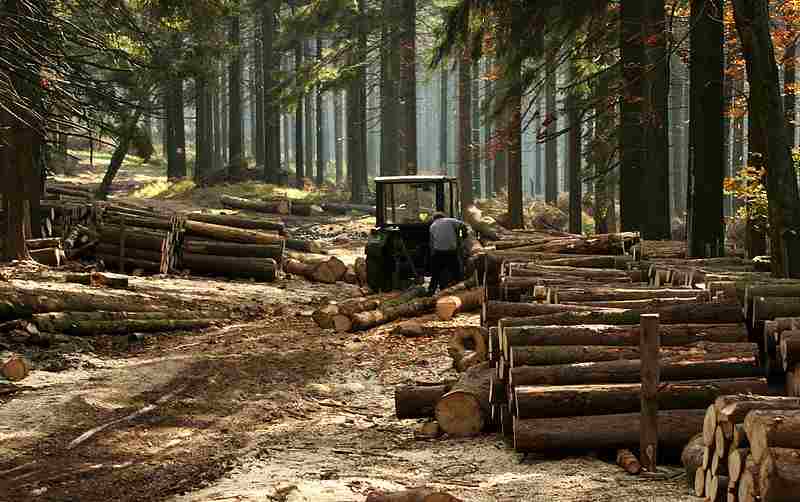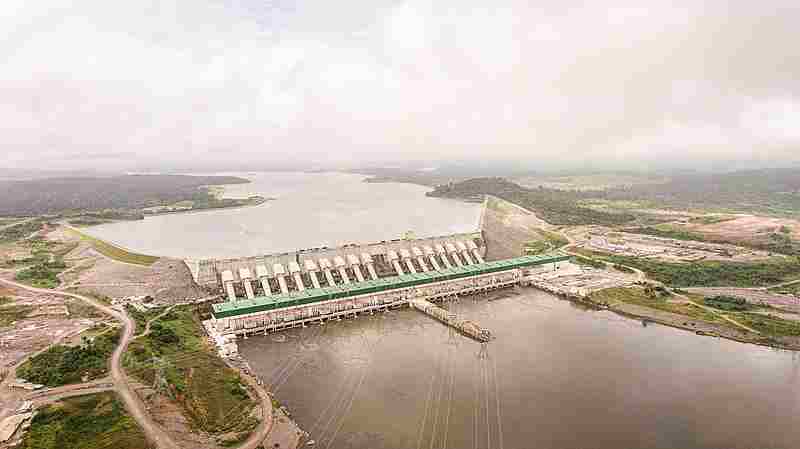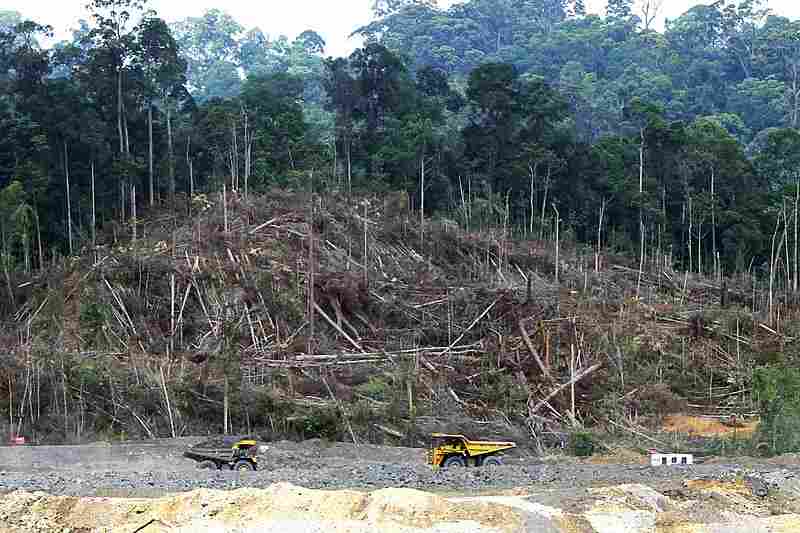8 Threats to the Temperate Deciduous Forest Discussed
Threats to the temperate deciduous forest include; logging, agricultural expansion, urbanization, invasive species' proliferation, disease outbreaks, pest infestation, wildfires, and climate change.
This article discusses threats to the temperate deciduous forest ecosystem, as follows;
1). Logging: One of the Threats to the Temperate Deciduous Forest
Logging, the practice of cutting down trees for timber and other forest products, poses a significant and often widespread threat to temperate deciduous forests.
These ecosystems, which are known for their immense biodiversity and seasonality, face numerous challenges due to commercial and unsustainable logging activities. The significance of logging as a threat and its consequences for temperate deciduous forests are of critical concern, as shown in discussions below.
Significance of Logging in Deciduous Forest Zones
Factors that point to the significance of logging in deciduous forests include; timber production, economic activity, habitat conversion, and infrastructure development.
Logging is a major source of timber and wood products used for construction, furniture-making, and paper production. The demand for wood drives extensive logging operations in temperate deciduous forests.
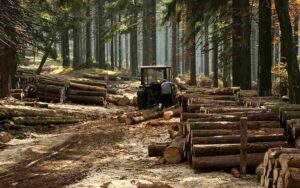
The timber industry is a prominent economic driver in many regions with temperate deciduous forests. Logging provides employment and income for numerous communities.
Land conversion for logging can lead to habitat alteration and fragmentation. Large areas of temperate deciduous forests are often cleared for timber production.
Individual roads and complex transportation networks are often constructed to access logging sites, leading to further environmental degradation and habitat disturbances.
Consequences of Logging for Temperate Deciduous Forests
The consequences of logging activities for temperate deciduous forests include; habitat loss, fragmentation, biodiversity/species richness decline, soil erosion, loss of carbon sinks, impacts on indigenous and local communities, loss of ecosystem services, and altered forest structure.
Logging results in direct habitat loss, in turn leading to the degradation of temperate deciduous forest ecosystems. This loss impacts both temperate forest plants and animals that rely on these forests for food and shelter.
The fragmentation of forested areas is another common outcome of logging activities. Isolated forest patches can disrupt ecological connectivity and contribute to edge effects, thereby altering natural forest dynamics.
As forests are cleared, the diversity of species that inhabit them generally declines. This includes both plant and animal species, many of which may, in the process, become locally extinct.
Without the stabilizing function of trees and forest cover, deforested areas are much more susceptible to soil erosion. This can lead to sedimentation of aquatic ecosystems/water bodies, degradation of water quality, as well as increased risk of flooding hazards.
Temperate deciduous forests are highly instrumental as carbon sinks, sequestering significant amounts of carbon dioxide. Logging releases such stored carbon into the atmosphere, thereby contributing to global climate change.
Several indigenous and local human populations rely on temperate deciduous forests for their livelihoods, which could be in the form of food, medicine, and customary practices. Logging can disrupt the provision of these traditional benefits.
Logging can also disrupt the provision of ecosystem services, including air quality optimization and water purification, recycling of nutrients, and the provision of essential resources. This can have wide-ranging repercussions on surrounding communities.
The structure of the forest can be altered notably by logging activities, including shifts in species composition and tree age structure, all of which can affect forest dynamics and ecologic resilience.
Strategies to Address Logging-Related Problems in Temperate Forests
In order to address the consequences of logging and its impact on temperate deciduous forests, sustainable forestry practices, deliberate conservation efforts, and well-planned land management are all required.
Strategies should be aimed toward minimizing habitat loss, reducing environmental pollution, protecting vital habitats, and promoting restoration measures like reforestation and afforestation to maintain the ecological integrity of the biome.
2). Agricultural Expansion
Agricultural expansion, which is generally driven by the need for food and resources, is a notable and multidimensional threat to temperate deciduous forests.
Temperate ecosystems around the world face numerous challenges arising from the conversion of forested areas into farmland. The significance of agricultural expansion as a threat as well as its consequences for temperate deciduous forests are of great concern, therefore, they are addressed in the following subsections.
Significance of Agricultural Expansion for Temperate Deciduous Forests
The significance of agricultural expansion for temperate deciduous forests can be traced to various factors including food production, economic activity, and resource extraction.
Agricultural expansion is a fundamental means of food production for human populations. As the global population continues to increase in size, the demand for agricultural land proportionately increases.
It must be mentioned that agriculture is a major economic pillar in many regions with temperate deciduous forests. It provides employment, sustenance-income, and exportation opportunities for several communities.
In addition to food production, agricultural expansion can also be linked to resource extraction from forested areas, including the harvest of wood and non-timber forest products. Under unsustainable and unregulated conditions, such extraction culminates in resource depletion and ecosystem deterioration.
Consequences of Agricultural Expansion for Temperate Deciduous Forests
Consequences of agricultural expansion for temperate deciduous forests include; habitat loss, biodiversity decline, soil erosion, water pollution, loss of carbon sinks/conversion to carbon sources, altered microclimate, impacts on local and indigenous communities, eutrophication, and impacts on pollinators.
Agricultural expansion results in the direct depletion and loss of temperate deciduous forest habitat. The clearing of forests for agricultural activity disrupts the ecosystem and displaces many native species.
As forest areas are progressively converted to farmland, the diversity of species which inhabit these ecosystems usually declines. Many species, including plant and animal groups, may be entirely exterminated as a result.
Agricultural practices, such as intensive tilling and preliminary deforestation, make soils more susceptible to severe erosion. This can lead to sedimentation of water bodies, leaching with reduced soil fertility, and reduction of regional water quality.
Runoff from agricultural fields can introduce various pollutants, including chemical compounds in fertilizers and pesticides, into nearby water bodies, thereby affecting aquatic ecosystems as well as water quality.
Temperate deciduous forests are vital carbon sinks, effectively involved in sequestering carbon dioxide from the atmosphere. Their conversion to agricultural land releases this stored carbon into the atmosphere, thereby contributing to environmental issues like global warming.
The replacement of forest ecosystems with agricultural plants/livestock can alter the local microclimate, leading to changes in temperature, humidity, and wind flow-patterns, all of which can affect the surrounding environment.
As stated earlier, some indigenous communities depend on temperate deciduous forests for various aspects of their livelihoods. Agricultural expansion can alter these services and resources.
Excess nutrients from the leaching of agricultural soils can lead to eutrophication in adjacent water bodies. This can cause the deterioration of aquatic ecosystems and render regional water resources unsafe for both forest wildlife and human populations.
Agricultural expansion can lead to the loss of natural pollinators like insects and birds, which can in tum disrupt pollination services and affect both agricultural and forest ecosystems.
Addressing Consequences of Agricultural Expansion in Temperate Forests
Addressing the consequences of agricultural expansion and its impact on temperate deciduous forests, is achievable through a combination of sustainable farming practices, wildlife conservation activities, and habitat delineation/restriction.
3). Urbanization: One of the Threats to the Temperate Deciduous Forest
Urbanization, the process of whereby natural landscapes are deliberately transformed into urban ecosystems characterized by manmade housing, infrastructure, and human activities, is an immensely-important and pervasive threat to temperate deciduous forests.
These ecosystems are increasingly challenged by the encroaching expansion of cities and towns. The significance of urbanization as a threat and its consequences for temperate deciduous forests are therefore of high concern.
Significance of Urbanization in Temperate Deciduous Forest Zones
Factors that point to the significance of urbanization in temperate deciduous forests include; population growth, economic activity, and infrastructure development.
As human populations continue to expand, there is a growing need for housing and infrastructure. Urbanization is the response to the spatial requirements of a growing global population.
Urban areas are generally used as centers of economic activity, generating employment, income, and contributing to regional and national growth in various sectors.
The construction of roads, water dams, bridges, buildings, and other infrastructures associated with urbanization requires land, water and other resources, which are often acquired at the expense of natural habitats.
Consequences of Urbanization for Temperate Forests
Ways in which urbanization affects temperate forests include; habitat loss, food chain disruption, biodiversity decline, soil and water impacts, increased greenhouse emissions, microclimatic changes, increased risk of natural hazards, and loss of ecosystem services, among others.
Urbanization directly leads to habitat loss as forests are cleared for residential, industrial and commercial uses. This process disrupts the ecosystem and displaces some native species from their habitat.
Urban areas, while being developed and expanded, often fragment forested landscapes into isolated patches, thereby reducing ecological connectivity and exposing interior habitats that are critical for the sustainability of forest dynamics.

As forests are progressively transformed into urban landscapes, the diversity of species that are found within them decreases, with many species of plants and animals becoming locally extinct.
Urbanization can also lead to changes in soil properties, often in the form of compaction, land pollution, and changes in nutrient cycling or availability. Runoff from urban areas can transport anthropogenic pollutants into nearby water bodies, affecting water quality and harming aquatic organisms.
Temperate deciduous forests, as stated earlier, function as carbon sinks, and store significant amounts of atmospheric carbon dioxide. Urbanization releases some of this stored carbon into the atmosphere, altering climatic conditions on various scales.
Urban areas can also create heat islands with higher temperatures and lower humidity compared to the surrounding forests. This can lead to intensive microclimatic changes that affect local environments.
Within or near forested areas, urban development can increase the risk of wildfires, which can in turn have devastating impacts on both the immediate forests and nearby human communities.
Indigenous and local communities that rely on temperate deciduous forests for their livelihoods, can feel the repercussions of urbanization, which can disrupt their traditional resources and lifestyles.
Lastly, urbanization disrupts the provision of several ecosystem services by temperate deciduous forests, including the prevention of soil erosion, water degradation and air pollution, the regulation of local temperature, and the provision of resources such as timber and non-timber products.
Addressing the Consequences of Urbanization for Temperate Forests
Measures that must be considered to address the consequences of urbanization and its impact on temperate deciduous forests, include sustainable urban planning, conservative land management, and habitat delineation/restriction.
These measures should have an end goal of minimizing habitat loss, reducing pollution, protecting critical habitats, and promoting vegetative restoration to maintain the ecological stability of these ecosystems.
It is important to strike a balance between the needs of human populations and the preservation of natural resources, for the long-term health and sustenance of temperate deciduous forests.
4). Invasive Species
Invasive species, including various non-forest plants and animals introduced by human activities, often pose a significant and scalable threat to temperate deciduous forests.
Temperate forests currently face multiple challenges that can be traced to the presence of non-native invasive species. The significance of these invasive species as a threat and the associated consequences for temperate deciduous forests are evaluated in this section.
Significance of Invasive Species in/to Temperate Deciduous Forests
It is possible to assess the significance of invasive species to temperate forests using concepts like global trade and transportation, altered landscapes, and ecosystem services.
Human activities like global trade and inter-regional transportation, have facilitated the spread of invasive species across many regions and continents. These species can establish themselves in new environments, which include temperate deciduous forests.
Invasive species are generally capable of altering the physical and ecological characteristics of forested areas. They sometimes outcompete and even exclude native species for resources, while changing natural trends of nutrient cycling, and disrupting helpful ecological relationships.
Also, the presence and activities of invasive species can affect the provision of ecosystem services in temperate deciduous forests, affecting processes such as pollination, water purification, and nutrient cycling.
Consequences of Invasive Species' Introduction into Temperate Deciduous Forests
Some consequences of the presence of invasive species in temperate forests are; habitat alteration, biodiversity decline, disruption of ecological relationships, loss of ecosystem services, increased hazard risk, altered forest structure, impacts on native flora and fauna, as well as economic costs.
Invasive species, through their presence and activities, can modify the structure and biotic composition of temperate deciduous forests. They may alter the attributes of understory plant communities, tree regeneration patterns, as well as overall ecosystem conditions.
Often, invasive species compete intensely against native flora and fauna for essential resources, thereby leading to declines in the diversity of such native species. Some of the less-resilient native species may become locally extinct as a result of severe invasive competition.
Invasive species can disrupt some essential ecological relationships that exist within the forest ecosystem. For example, invasive herbivores may consume some native angiosperms that serve as preferred hosts for native pollinators.
Through their disruptive influence, invasive species can reduce ecosystem services in temperate deciduous forests. This can affect functions such as water purification, carbon sequestration, and photosynthetic production of biomass.
Some invasive plant species are highly flammable, so that their growth increases the risk of wildfires in temperate deciduous forests. Wildfires themselves can have devastating ecological and human consequences.
Invasive species can change forest structure, which includes the composition/arrangement of tree species and understory vegetation. This phenomenon can affect wildlife habitation, tree regeneration, and forest resilience.
Negative impacts can be exerted by invasive species on native plants and animals, by competing for essential resources, altering food availability, and disrupting the conditions/availability of nesting and foraging habitats.
Lastly, the management of invasive species in temperate deciduous forests can be a costly venture, affecting both public and private resources.
Potential Solutions to the Threat of Invasive Species in Temperate Deciduous Forests
Potential measures to address the consequences of invasive species and their impact on temperate deciduous forests include; invasive species management, monitoring, early detection, and prevention.
The focus of these measures should be on minimizing the introduction and spread of invasive species, monitoring their population dynamics, and implementing control tools/schemes.
In addition, public education and awareness can help to prevent the unintentional introduction of invasive species into temperate forests, promoting the preservation of the distinctive biodiversity and genealogical integrity of these ecosystems.
5). Disease Outbreaks: One of the Threats to the Temperate Deciduous Forest
Disease outbreaks, which are often caused by pathogens like fungi, bacteria, and viruses, represent a significant and recurring threat to many temperate deciduous forests.
These ecosystems face risks of intensive deterioration due to disease epidemics. Here is a discussion of the significance of disease outbreaks as a threat, and their consequences for temperate deciduous forests.
Significance of Disease Outbreaks as a Threat to Temperate Deciduous Forests
Criteria for evaluating the significance of disease outbreaks as a threat to deciduous forests include; pathogen dynamics, altered climatic conditions, and human activities.
Pathogens that are responsible for forest diseases, are usually naturally occurring components of forest ecosystems. However, their dynamics can be influenced by environmental changes, human activities, and the anthropogenic introduction of non-native pathogens.
Changes in climate, fostered by human-induced climate change, can affect disease dynamics occurring in temperate deciduous forests. Shifts in local temperature and precipitation patterns can favor the proliferation of certain pathogens.
Global commerce, manufacturing and transportation are among human activities that can also inadvertently introduce pathogens to new regions. Infected raw materials, sheltered disease vectors, or contaminated equipment can all spread diseases to temperate deciduous forests.
Consequences of Disease Outbreaks for Temperate Deciduous Forests
Some consequences of disease outbreaks for temperate deciduous forests are; tree mortality, biodiversity decline, changes in forest composition, altered nutrient cycling trends, impacts on ecosystem services, fiscal costs, increased risk of wildfires, and largescale spread of invasive pathogens.
Disease outbreaks can lead to significant tree mortality and foliar defects within temperate deciduous forests. Some pathogens can kill entire stands of trees, altering forest structure and composition.
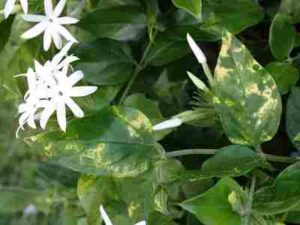
As native tree species in temperate forests succumb to diseases, the diversity of the forest ecosystem progressively declines. This can affect all dependent species, including insects, birds, reptiles, amphibians, aquatic organisms and mammals.
The loss of tree species to disease can lead to drastic changes in forest composition. In some of such cases, species that are less susceptible to the pathogen may become dominant, altering the forest's genetic makeup.
As infected trees die and undergo biodegradation, nutrient cycling processes in the forest can be affected. Changes in nutrient availability can in turn affect the growth of remaining vegetation.
Disease outbreaks can disrupt the provision of many ecosystem services such as carbon sequestration, air quality optimization, water purification, and primary production.
The management and mitigation of disease outbreaks in temperate deciduous forests and surrounding areas can be fiscally demanding for forest management agencies and private landowners.
Dead and diseased trees can accumulate flammable biomass that increases the risk of wildfires, which can have severe ecological and human repercussions.
Lastly, disease outbreaks can facilitate the introduction and spread of invasive vectors, further exacerbating the problem.
Addressing the Consequences of Disease Outbreaks in Temperate Forests
Addressing the consequences of disease outbreaks and their impact on temperate deciduous forests is possible through the implementation of strategies involving; forest health monitoring, disease management, and early pathogen detection.
The objectives of proactive efforts must include maintaining forest health through sustainable management practices, promoting biodiversity, and reducing stress factors that can render deciduous trees more vulnerable to disease.
Research into disease-resistant tree species and public awareness of best practices can also help to safeguard the composition and equilibrium of these ecosystems.
6). Pest Infestation
Pest infestations, often spearheaded by insects and other arthropods, represent another significant and recurrent threat to temperate deciduous forests.
These forests are faced with multiple challenges related to pest outbreaks. The significance of pest infestations as a threat, along with their consequences for temperate deciduous forests are discussed elaborately below.
Significance of Pest Infestations for Temperate Deciduous Forests
Factors pointing to the significance of pest infestations for deciduous forests include; natural pest dynamics, climate change effects, and human activities.
Many insect pests are natural components of forest ecosystems, and their populations are typically kept in check by natural predators among other ecological factors.
Changes in climate, driven by human-induced climate change, can affect the life cycles and population dynamics of pest species, thereby increasing the likelihood of outbreaks.
Human activities like commerce can introduce pests to new regions. Infested plant material, or untreated wood products can spread pests to temperate deciduous forests.
Consequences of Pest Infestations for Temperate Forests
Consequences of pest infestations for temperate forests include; mortality of trees, loss of biodiversity, forest compositional changes, altered trends of nutrient cycling, impacts on ecosystem services, economic costs, and increased risk of wildfires.
Pest infestations can lead to widespread tree deterioration and mortality in temperate deciduous forests. Some pests, like bark beetles, can kill large numbers of trees, in such a manner that may affect forest structure and composition.
As native tree species are destroyed through the activities of pests, the diversity of the entire forest ecosystem declines. This can impact species that depend on these trees for food, refuge, and breeding.
The loss of tree species to pest infestations can lead to large-scale changes in forest composition. Less vulnerable species may become dominant, altering the forest's biotic makeup.
Decomposition of dead trees can affect nutrient cycling patterns in the forest. Changes in nutrient availability and distribution can impact the growth of surviving vegetation.
Pest infestations can disrupt the provision of essential ecosystem services like the maintenance of abiotic conditions and factors in temperate forests and their surroundings.
The management and mitigation of pest infestations in temperate deciduous forests can involve costly measures and tools that can affect the economy by diverting substantial resources.
Pest infestations can be linked to the introduction and proliferation of invasive pest species, which are themselves threats to the temperate deciduous forest.
Dry biomass from trees affected by pest infestations, can increase the risk of wildfires, or may even harbor more pests, which can have severe ecological implications.
Mitigating the Consequences of Pest Infestations for Temperate Deciduous Forests
Ways to address the consequences of pest infestations and their impact on temperate deciduous forests include; forest health monitoring, pest management, and early detection.
The importance of such strategies include; maintaining forest health through sustainable management, supporting biodiversity, and reducing the influence of stimuli that can make trees more vulnerable to pests.
Research into pest-resistant tree species as well as public awareness of best practices can also help to reduce the vulnerability of forests.
7). Wildfires: One of the Threats to the Temperate Deciduous Forest
Wildfires, which are basically uncontrolled fires that can spread rapidly and devastate natural landscapes, represent a very impactful threat to temperate deciduous forests.
These forest are affected by the occurrence of wildfires among other problems. The significance of wildfires as a threat and their consequences for temperate deciduous forests are outlined in the following subsection.
Significance of Wildfires to Temperate Deciduous Forests
Some criteria which are relevant for assessing the significance of wildfires to temperate deciduous forests are; natural fire regime, climate change effects, and human activities.
Fire is a natural occurrence in many ecosystems, including temperate deciduous forests. Historically, these forests have evolved with periodic, low-intensity fires that help to drive organic adaptation and maintain ecosystem vitality.
Changes in climate patterns, which may occur in forms such as increased temperatures and altered precipitation, can influence the frequency, intensity, and behavior of wildfires.
Human activities, such as burning of campfires, disposal of cigarettes, and land-use changes, can contribute to non-natural outbreaks of wildfires, often with severe consequences.
Consequences of Wildfires for Temperate Deciduous Forests
Consequences of wildfire hazards for temperate deciduous forests include; tree mortality, biodiversity loss, soil alteration, ecosystem service disruption, altered forest composition, economic costs, impacts on local communities, and colonization by invasive species.
Wildfires can lead to largescale tree mortality in temperate deciduous forests, especially in severe cases. This may impact forest structure and composition.
As native canopy trees and smaller plants are destroyed by fires, the diversity of the forest ecosystem tends to decrease. This can affect organisms that depend on the interconnectivity of the deciduous forest food web to survive, which include insects, birds, reptiles and various mammalian consumers.
In temperate forests, wildfires can also alter soil properties, resulting in changes in nutrient availability and compaction, as well as reduced water-holding capacity. These soil changes can affect the growth and productivity of vegetation.
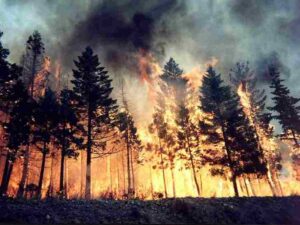
Wildfires can disrupt the provision of ecosystem services by temperate deciduous forests, such as carbon sequestration, environment optimization, and climate regulation.
The loss of tree species and changes in understory plant characteristics, can lead to shifts in forest composition. Some species that are relatively resilient to fire may become more prominent, causing major trophic changes to the deciduous forest food chain and energy pyramid.
The management, suppression, and recovery from wildfires can incur huge fiscal costs for agencies and individuals.
Local communities within the vicinity of temperate deciduous forests often depend on these ecosystems for their livelihoods, which be in the form of food, medicine, ecotourism, and cultural practices. Wildfires can cause the loss of such benefits.
After a wildfire, invasive plant species can colonize open areas, where they may gain competitive advantage over native vegetation and alter the natural dynamics of the biome.
Addressing Wildfire Consequences in Temperate Forests
The consequences of wildfires and their impact on temperate deciduous forests, can be addressed using strategies that include fire management and prevention, controlled burns to mimic natural fire regimes, and campaigns for education and awareness on wildfire causes and repercussions.
Land management measures should be implemented to maintain forest health, reduce fire risks, and promote resilience against the incidence and effects of wildfires. Public engagement and community involvement are also important for ensuring the preservation and restoration of these ecosystems.
8). Climate Change
Climate change, which is facilitated by human activities such as the burning of fossil fuels and deforestation, is undoubtedly an overarching threat to temperate deciduous forests.
Shifting climate patterns pose a threat to deciduous forests, with links to numerous negative phenomena for the immediate ecosystem as well as its environs. The significance of climate change as a threat and its consequences for temperate deciduous forests are therefore critical, as portrayed in the subsections below.
Significance of Climate Change for Temperate Deciduous Forests
Concepts that can be used to discuss the significance of climate change for temperate forests include; global impact, altered temperature and precipitation, and carbon emissions.
Having a global span of impact, climate change affects all major ecosystems across the world. The effects of a changing climate are particularly pronounced in temperate deciduous forests, which are highly sensitive to alterations in temperature and precipitation.
Climate change is accompanied by rising temperatures and changing precipitation patterns, which lead to more frequent and severe weather events and prolonged droughts, as well as altered growing seasons.
The release of greenhouse gases, such as carbon dioxide, from human activities contributes notably to global warming and exacerbates climate change.
Consequences of Climate Change for Temperate Deciduous Forests
The consequences of climate change for temperate deciduous forests include; altered growing seasons, shifts in species distributions, increased stress, altered patterns of nutrient cycling, ecosystem service disruption, sea-level rise, and economic impacts.
Rising temperatures and changing seasonal trends can disrupt the timing of flowering, leaf-out, and fruiting in temperate deciduous forests, which in turn affects wildlife and plant species.
As temperatures change, some tree species may shift their ranges in order to find more suitable climatic conditions. This can lead to changes in forest spatial characteristics, composition, and vegetative structure.
Extended periods of drought, extreme heat, or unseasonable frosts can place immense stress on forest vegetation and make them more vulnerable to pests, diseases, and wildfires.
Climate change can disrupt ecological relationships that occur naturally within the forest, leading to the decline of sustainability and native species' populations, while potentially benefiting invasive species.
As some tree species become less viable in their current locations, they may be replaced by more heat-tolerant plants. This can alter the composition, diversity and resilience of the forest.
Changes in climate can affect nutrient cycling patterns in the forest, impacting the productivity and long-term continuity of vegetation.
Also, climate change can disrupt the provision of ecosystem services like carbon sequestration, microclimate management, and water purification.
Coastal temperate deciduous forests are vulnerable to sea-level rise, which can result from the melting of polar ice and the simultaneous expansion of seawater due to warming temperatures. The forestry industry and communities that depend on temperate deciduous forests for resources and livelihoods may face economic challenges due to such climate-related disruptions.
Potential Ways to Address Climate Change Consequences in Temperate Deciduous Forests
Addressing the consequences of climate change and its impact on temperate deciduous forests can be achieved through global efforts to reduce greenhouse gas emissions.
Conservation schemes should center on promoting forest resilience, assisting the migration of species, and driving the development of climate-smart forest management practices.
Reforestation and afforestation projects can also help with boosting natural carbon capture and storage, while conserving the most vital biotic and abiotic characteristics of the forest.
Conclusion
Threats to the temperate deciduous forest are;
1. Logging
2. Agricultural Expansion
3. Urbanization
4. Invasive Species
5. Disease Outbreaks
6. Pest Infestation
7. Wildfires
8. Climate Change
